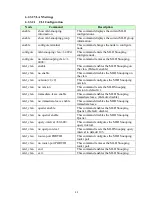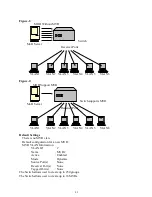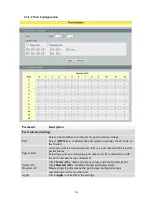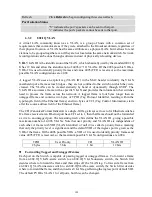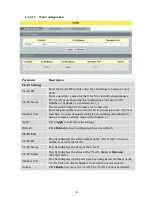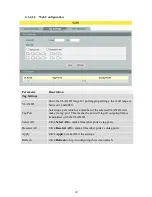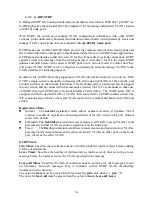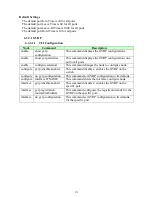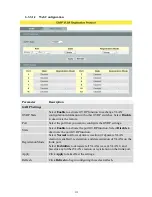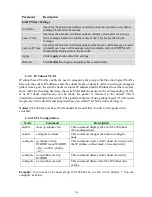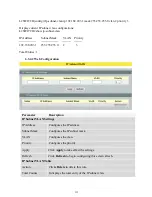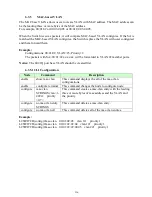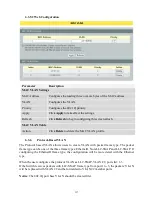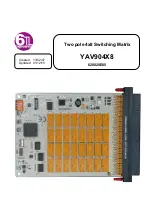
102
Refresh
Click
Refresh
to begin configuring this screen afresh.
Port Isolation Status
“V” indicates the port’s packets can be sent to that port.
“-” indicates the port’s packets cannot be sent to that port.
6.3.2
802.1Q VLAN
A virtual LAN, commonly known as a VLAN, is a group of hosts with a common set of
requirements that communicate as if they were attached to the Broadcast domain, regardless of
their physical location. A VLAN has the same attributes as a physical LAN, but it allows for end
stations to be grouped together even if they are not located on the same network switch. Network
reconfiguration can be done through software instead of physically relocating devices.
VID
- VLAN ID is the identification of the VLAN, which is basically used by the standard 802.1Q.
It has 12 bits and allow the identification of 4096 (2^12) VLANs. Of the 4096 possible VIDs, a
VID of 0 is used to identify priority frames and value 4095 (FFF) is reserved, so the maximum
possible VLAN configurations are 4,094.
A tagged VLAN uses an explicit tag (VLAN ID) in the MAC header to identify the VLAN
membership of a frame across bridges - they are not confined to the switch on which they were
created. The VLANs can be created statically by hand or dynamically through GVRP. The
VLAN ID associates a frame with a specific VLAN and provides the information that switches
need to process the frame across the network. A tagged frame is four bytes longer than an
untagged frame and contains two bytes of TPID (Tag Protocol Identifier, residing within the
type/length field of the Ethernet frame) and two bytes of TCI (Tag Control Information, starts
after the source address field of the Ethernet frame).
The CFI (Canonical Format Indicator) is a single-bit flag, always set to zero for Ethernet switches.
If a frame received at an Ethernet port has a CFI set to 1, then that frame should not be forwarded
as it is to an untagged port. The remaining twelve bits define the VLAN ID, giving a possible
maximum number of 4,096 VLANs. Note that user priority and VLAN ID are independent of
each other. A frame with VID (VLAN Identifier) of null (0) is called a priority frame, meaning
that only the priority level is significant and the default VID of the ingress port is given as the
VID of the frame. Of the 4096 possible VIDs, a VID of 0 is used to identify priority frames and
value 4095 (FFF) is reserved, so the maximum possible VLAN configurations are 4,094.
TPID
User Priority
CFI
VLAN ID
2 bytes
3 bits
1 bit
12 bits
Forwarding Tagged and Untagged Frames
Each port on the Switch is capable of passing tagged or untagged frames. To forward a frame
from an 802.1Q VLAN-aware switch to an 802.1Q VLAN-unaware switch, the Switch first
decides where to forward the frame and then strips off the VLAN tag. To forward a frame from
an 802.1Q VLAN-unaware switch to an 802.1QVLAN-aware switch, the Switch first decides
where to forward the frame, and then inserts a VLAN tag reflecting the ingress port's default VID.
The default PVID is VLAN 1 for all ports, but this can be changed.
Summary of Contents for NGI-M08C4POE8-2
Page 1: ......
Page 197: ...197 Clear Clear the statistics of the valn ...
Page 298: ...298 9 2 2 Web Configurations ...

